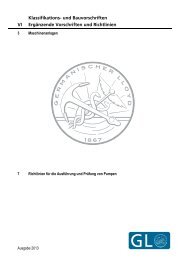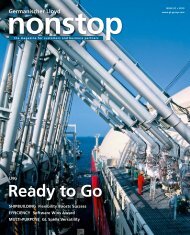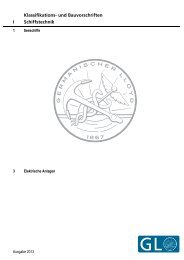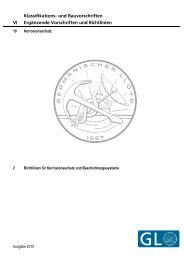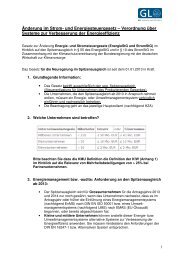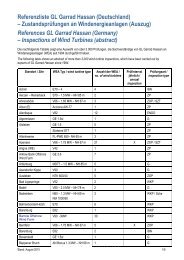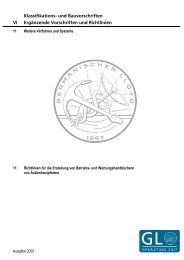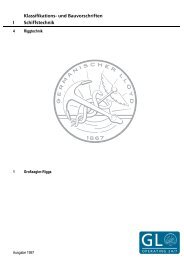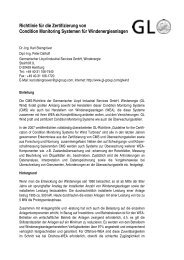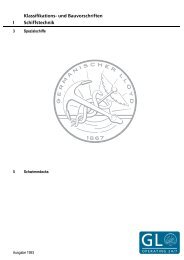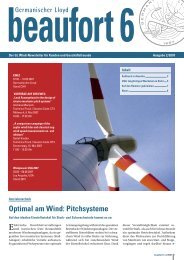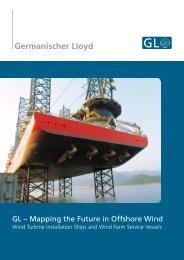(IV-7-3) General Safety
(IV-7-3) General Safety
(IV-7-3) General Safety
You also want an ePaper? Increase the reach of your titles
YUMPU automatically turns print PDFs into web optimized ePapers that Google loves.
Rules <strong>IV</strong> Industrial Services<br />
Part 7 Offshore Technology<br />
Chapter 3 <strong>General</strong> <strong>Safety</strong><br />
Section 8<br />
Active Fire Protection<br />
and hoses. Closure of any single isolating valve or combination of isolating valves shall not leave any part<br />
of the main unprotected against overpressure.<br />
E.1.1.7 The water supply for the fire main should be drawn directly from the sea or a tank and only<br />
self-priming pumps shall be installed. However, in installations/ units with high suction lifts, booster pumps<br />
and intermediate storage tanks may be installed.<br />
E.1.1.8 Where either of the required pumps is located in a space not normally manned and relatively<br />
far away from working areas, provisions are to be made for remote start-up of the pump and remote operation<br />
of associated suction and discharge valves.<br />
E.1.1.9 Except as provided in E.1.1.1, sanitary, bilge or general service pumps may be accepted as<br />
fire pumps, provided that they are not normally used for pumping oil.<br />
E.1.1.10<br />
E.1.2<br />
E.1.2.1<br />
Fire pumps shall start automatically when there is a pressure drop in the firewater main.<br />
Fire mains<br />
A fixed fire main shall be provided.<br />
E.1.2.2 The diameter of the fire main and water service pipes shall be sufficient for the effective distribution<br />
of the maximum required discharge from the required fire pumps operating simultaneously.<br />
E.1.2.3 With the required fire pumps operating simultaneously, the pressure maintained in the fire<br />
mains shall be adequate for the safe and efficient operation of all equipment supplied therefrom.<br />
E.1.2.4 The fire main is to be routed clear of hazardous areas as far as practicable and be arranged in<br />
such a manner as to make maximum use of any thermal shielding or physical protection afforded by the<br />
structure of the unit.<br />
E.1.2.5 The fire main shall be provided with isolating valves located so as to permit optimum utilization<br />
in the event of physical damage to any part of the main.<br />
E.1.2.6<br />
The fire main shall not have connections other than for fire-fighting purposes.<br />
E.1.2.7 All practical precautions should be taken to protect the fire main against freezing, in order to<br />
have water readily available.<br />
E.1.2.8 Materials readily rendered ineffective by heat shall not be used for fire mains and hydrants<br />
unless adequately protected. Hydrants shall be so placed that the fire hoses may be easily connected.<br />
E.1.2.9 A cock or valve is to be fitted to serve each fire hose so that any fire hose may be removed<br />
while the fire pumps are at work.<br />
E.1.3<br />
Monitors, hydrants, hoses and nozzles<br />
E.1.3.1 The unit or installation shall be equipped with a sufficient number of strategically located hydrants,<br />
hose stations, fire hose reels and monitors.<br />
E.1.3.2 Monitors<br />
Monitors shall be installed, if applicable depending on designed hazardous areas. Details of monitors to<br />
be subject of relevant fire load of the hazardous area.<br />
E.1.3.3 Hydrants<br />
Hydrants are to be so distributed, that at least two water jets not emanating from the same hydrant can<br />
reach any point of the platform which would normally be accessible to the crew. One jet may be delivered<br />
by a single length of hose and the second by a joint hose length of not more than 30 m.<br />
E.1.3.4 Fire hoses<br />
Fire hoses shall be of an approved type and be sufficient in length to project a jet of water to any of the<br />
spaces in which they may be required to be used. Their maximum length should not exceed 15 m. For<br />
open decks, also length of fire hoses of 20 m are acceptable.<br />
Edition 2013 Germanischer Lloyd Page 8–4




